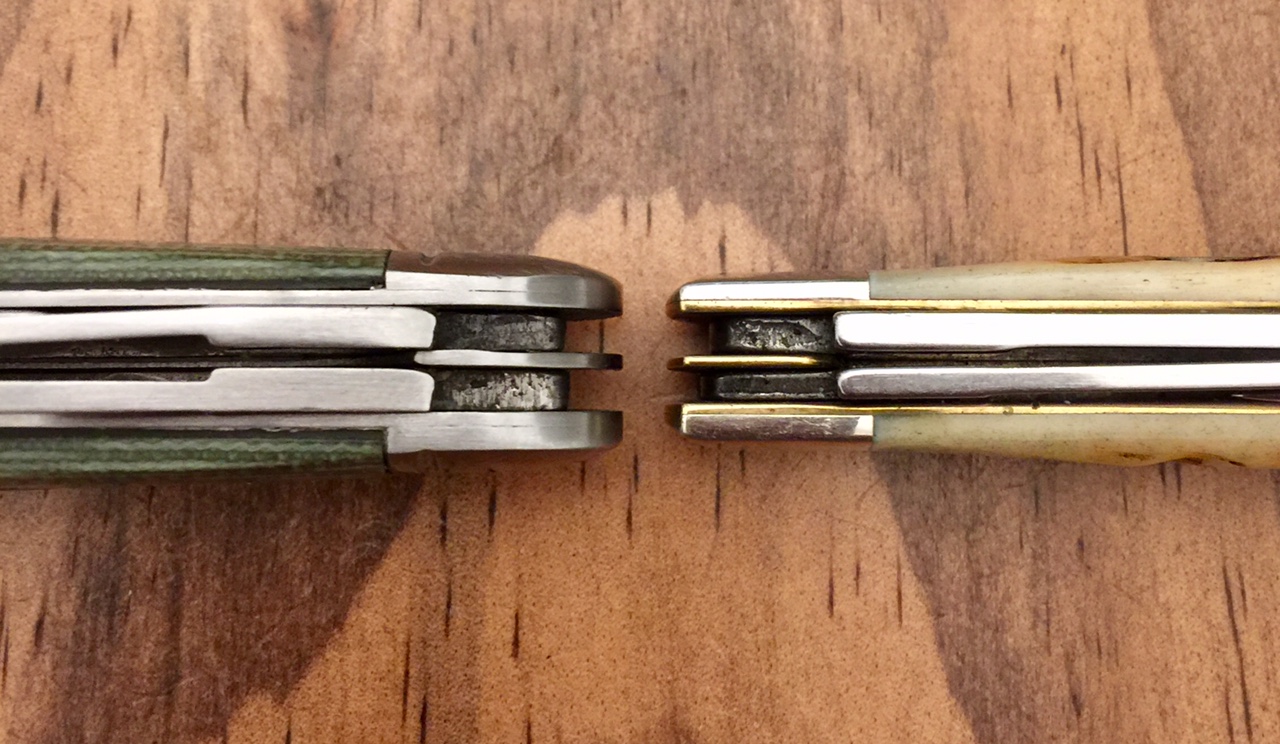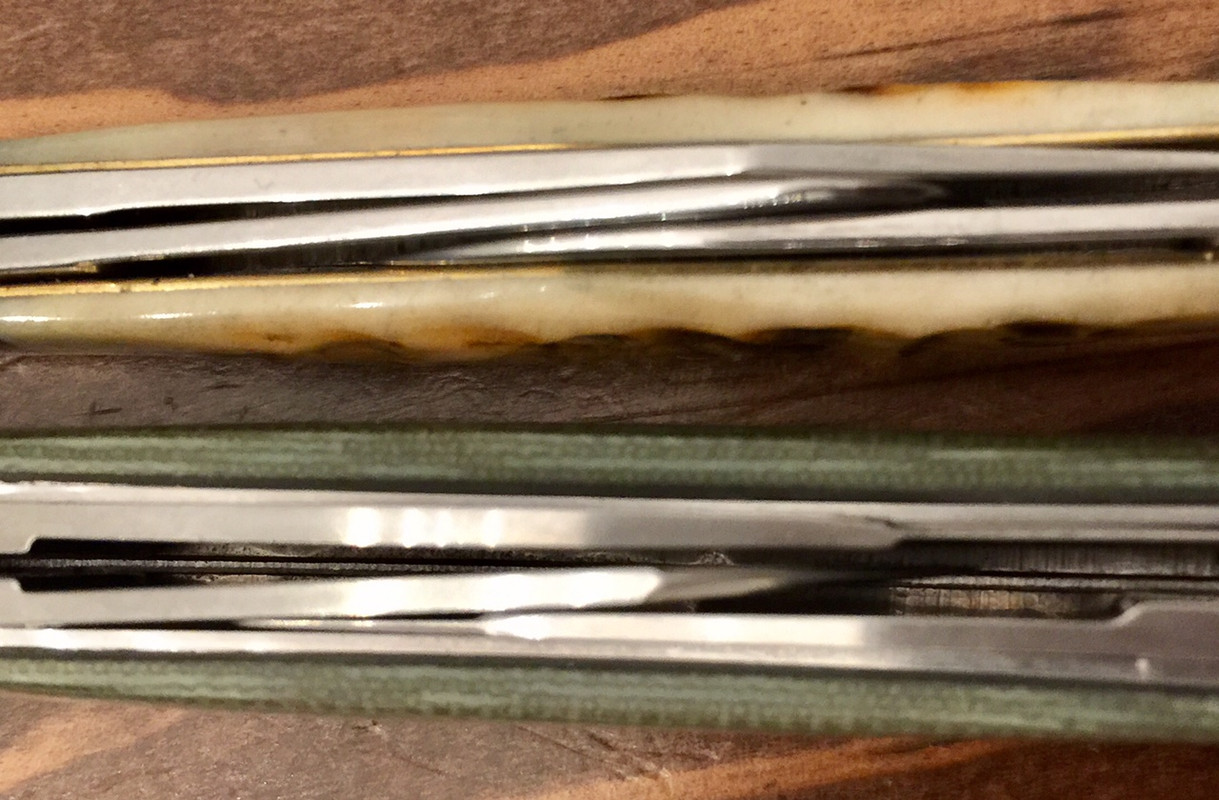"Gaps are barely noticeable" is very different than no gaps. I can see the gaps in the photo. But I have gotten much worse from RR than that particular example. The main blade is way off center toward the mark side. I'm surprised that doesn't rub. The quality of the bone covers and dye is poor. The shield is the thickness of aluminum foil.
There are differences between this knife and a Case knife. I think the unfair comparisons are due to the price. The ones that are falling apart just a few posts away are dismissed because they are cheap. The gaps are dismissed because they are cheap. The low quality covers and dye are dismissed because they are cheap. I'm not saying they are garbage but I think the way that the knives are compared to knives made by American manufacturers is not accurate.
Do you honestly think that you parents, grand parents, great grand parents, or even great-great grand parents, even noticed things like a small gap between the covers and liners (or covers and bolsters), blade rub, and so on?
Contrary to "popular belief", Case, Schrade Cut Co/Schrade Walden, Imperial, Camillus, Old Timer, (original Pre-War) Queen, Robeson, et-all, all had the same issues "back in the day", long before inexpensive knives made in Asia ever hit our shores.
Every mass produced knife, regardless of manufacturer has had these "issues".
Those that came before us, noticed things like an excessively hard pull, and floppy blades, and rejected knives based on that.
Most times, they did not send them back to the factory, or return them to the shop they purchased it at, either. They just bought another, and tossed the defective one in a drawer, cigar box, toolbox, or tacklebox. (In the case of the latter two, a hard to open knife may have been opened before being put in) and forgotten.
They did not notice (or care about) a gap that does not affect the functionality, a cover being 1/1000 inch or so off of mating perfectly with a bolster, a little blade rub (especially on a one backspring 2 blade, or two backspring 3 or 4 blade knife. "a little blade rub goes with the pattern" was the prevailing attitude at one time), a slightly sunken or proud backspring, a small crack in a bone cover, and other minor issues that so many cry about today.
Unlike many today, they did not expect or demand "perfection".
They saw a pocket knife as a tool, and used it as such. Most times a lot "harder" than we would use the same pattern for today.
I am quite sure they would shake their heads and laugh at us for being so "picky" about our knives. (and shudder at what a knife (even a Rough Rider) costs now days.)





